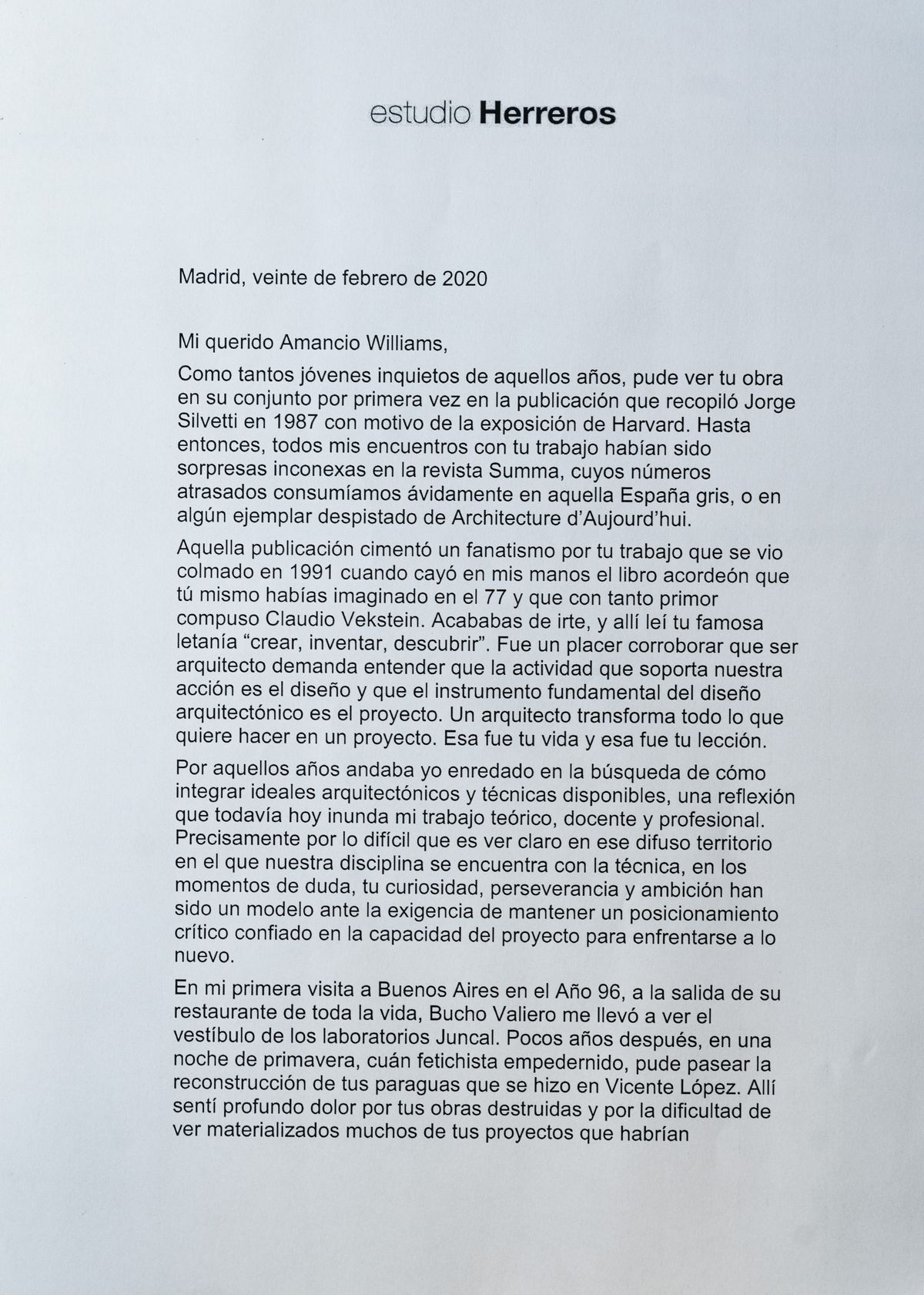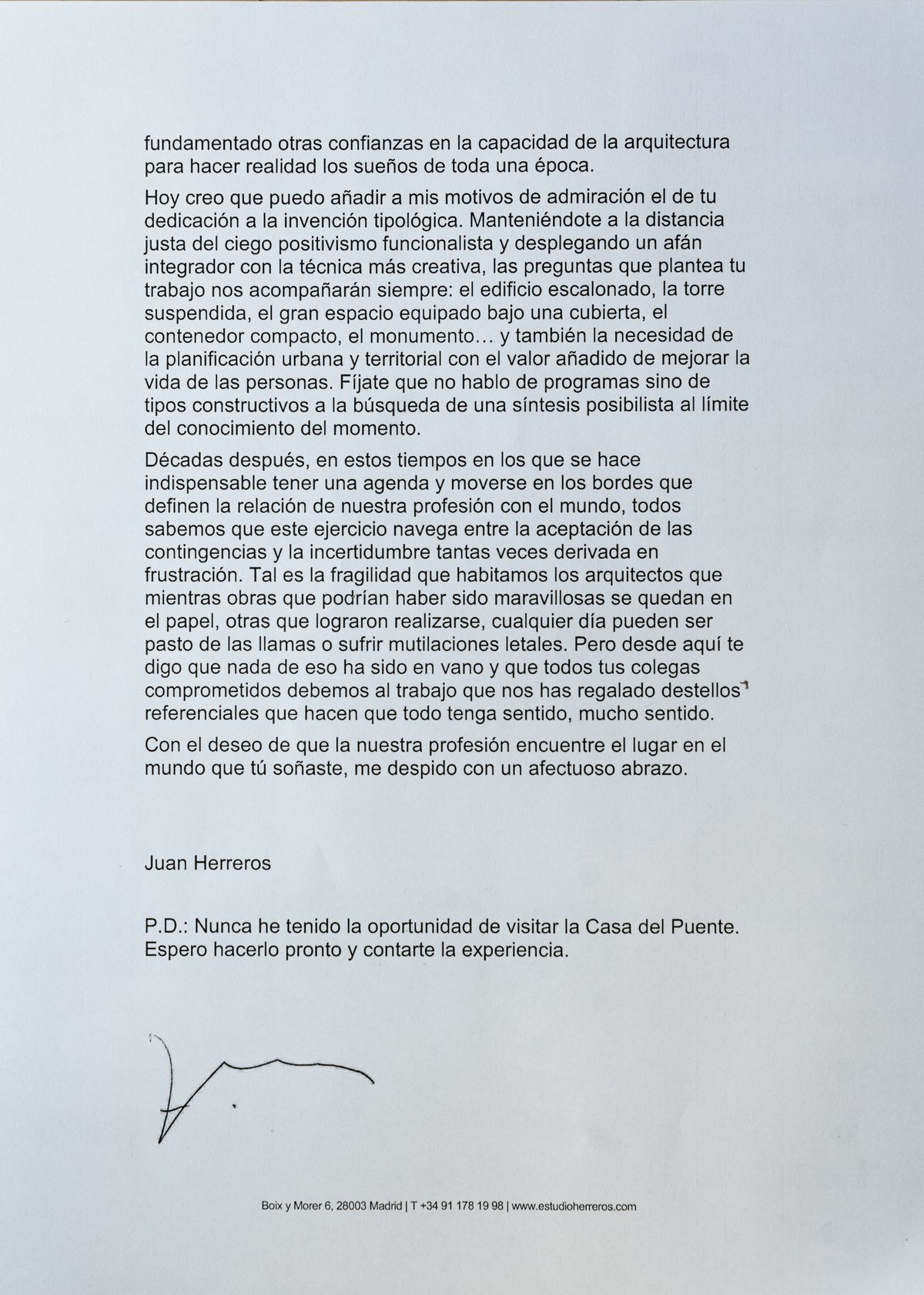Like many restless youths in those years, the first time I saw your work in its entirety was in the publication compiled by Jorge Silvetti on the occasion of the exhibition at Harvard in 1987. Until then, all my encounters with your work had been through disjointed revelations in the magazine Summa, the back issues of which we consumed avidly in a grey Spain, or in odd issues of Architecture d’Aujourd’hui that we happened upon.
That publication laid the foundations for a devotion to your work that was rewarded in 1991 when I came across the accordion book that you yourself had imagined in 1977 and that Claudio Vekstein so neatly put together. You had recently left us, and it was there that I read your famous litany, “create, invent, discover.” I was pleased to receive affirmation that being an architect requires us to understand that the activity supporting our action is design, and that the fundamental instrument of architectural design is the project. Architects transform everything they want to do into a project. That was your life, and that was your lesson.
Back then, I was embroiled in the search for a way to integrate architectural ideals and available techniques, a reflection that still permeates my theoretical, teaching, and professional work today.
Precisely because it is so difficult to see clearly in that blurred territory where our discipline meets technique, at times of doubt your curiosity, perseverance, and ambition have provided a model in the face of the need to maintain a critical stance that trusts in the capacity of the project to address novelty.
During my first visit to Buenos Aires in 1996, after we left his favourite restaurant, Bucho Baliero took me to see the lobby of the laboratories on Calle Juncal. A few years later, one spring evening, as an inveterate devotee, I was able to visit the reconstruction of your umbrellas in Vicente López. There, I felt deep sorrow for all your works destroyed and for the difficulty of materializing many of your projects that would have inspired faith in the ability of architecture to make the dreams of an era come true.
Today, I think I can add your dedication to the invention of typologies to my reasons for admiration. Maintaining a judicious distance from blind functionalist positivism and displaying an integrative desire for the most creative technique, the questions raised by your work will accompany us always: the stepped building, the building on stilts, the large fitted space under a big roof, the compact container, the monument…and also the need for urban and territorial planning with the added value of improving people’s lives. Note that I refer not to programmes but to building types in search of a possibilistic synthesis at the limit of the knowledge of the time.
Decades later, in these times when it is vital to have an agenda and to move around within the liminal spaces that define our profession’s relation with the world, we all know that this exercise steers between acceptance of contingencies and the uncertainty that so frequently leads to frustration. Such is the fragility in which we architects live, that while works that could have been wonderful are left on paper, others that did get built could, any day, go up in flames or be subjected to fatal mutilation. But here I tell you that none of this has been in vain and that, in the work that you have given us, your committed colleagues find flashes of guidance to tell us that everything makes sense, perfect sense.
With the hope that our profession finds the place in the world that you dreamt of, I sign off with warmest wishes.
Juan Herreros
Madrid, 20 February 2020
PS I have never had the opportunity to visit your Bridge House. I hope to do so soon and to tell you about the experience.

